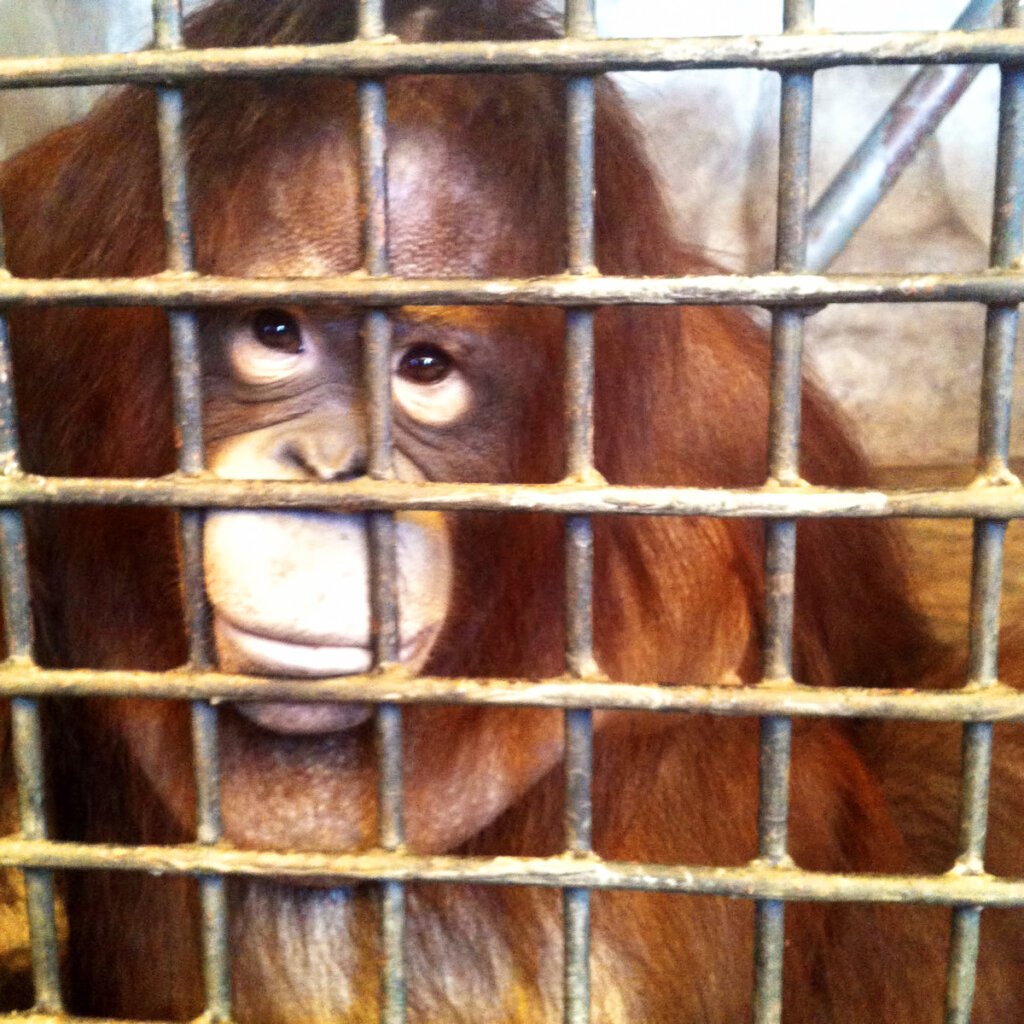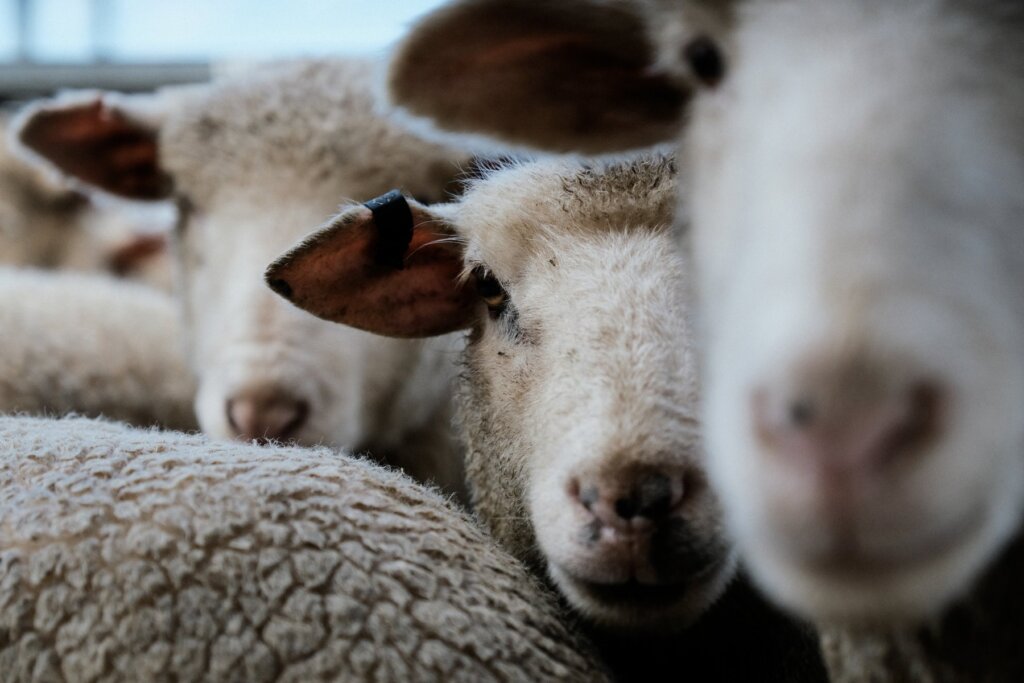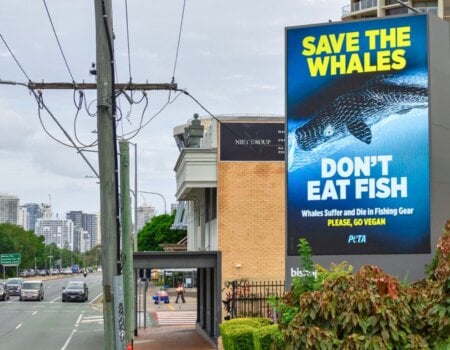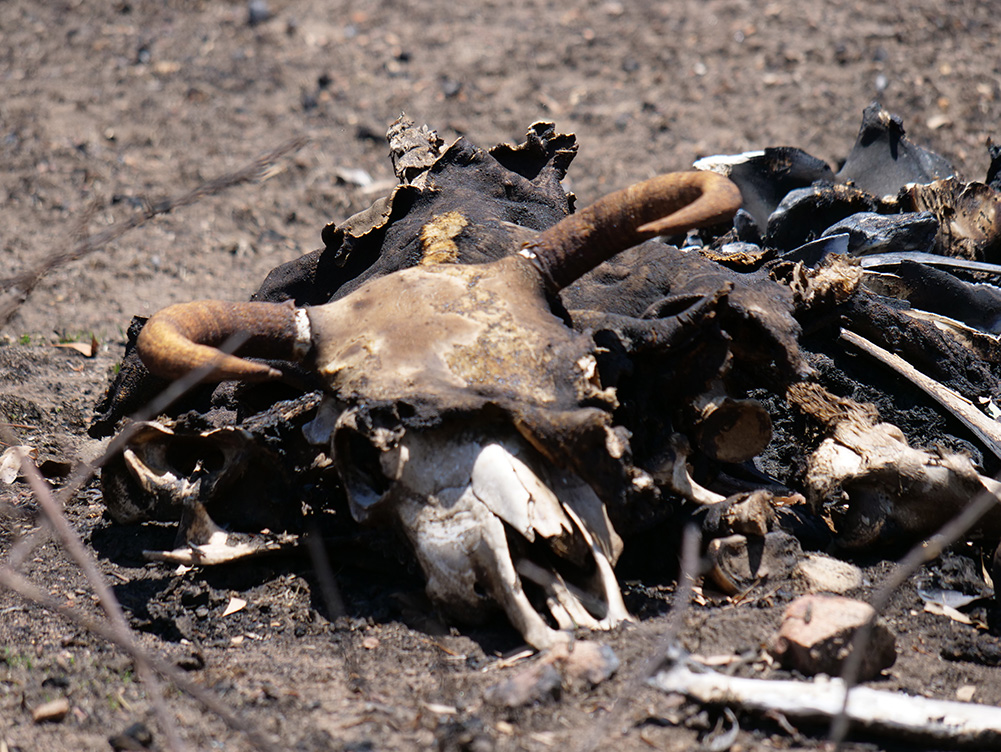
Australian Fire Aftermath: A Disaster Relief Road Trip
I just returned from a road trip but not the kind you might associate with an Australian summer. There were no singalongs down the highway or rolling down the car windows to let in the fresh country air. The forests along the highway were empty and eerie, and the thick smoky air closed in around me. Major roads were closed because of nearby fires, fallen trees or landslides, and those of us travelling into these areas were doing so for one reason only: disaster relief.

I am writing before going out for my weekend rehab work at an animal sanctuary. This has been a difficult time for us. Statistics suggest that 25,000 koalas have died in the fires on Kangaroo Island alone, but they are not the only animals suffering. 100,000 sheep also perished when the island caught alight, dispassionately counted as “livestock” rather than as individuals.
News reports have merely focused on farmers who faced the undoubtedly emotional task of shooting their injured animals, and the impact this has on their finances. But there has been little coverage of the suffering these animals themselves experienced as fires closed in on them – the burning of their hooves, udders and skin and being overwhelmed with smoke and unable to breathe. They’re thought of as replaceable commodities like the fencing that I watched farmers putting up around the farms as I drove along.
Survivors Sent to Slaughterhouses
Before arriving on Kangaroo Island, I traveled through some of the worst fire-damaged areas in Victoria and New South Wales: Omeo, Corryong, Tintaldra, Towong and Batlow. I visited the East Gippsland Livestock Exchange in hopes of negotiating the surrender of any animal injured by fire. However, I was told they had “[e]ither gone to the abattoir, or they’ve shot [them] on the farm.” I spoke to other farmers along the way, including one who told me that a cow got tangled in the fencing and burned alive, while another lost her eyesight in the intense heat. In Batlow, a farmer told me that hundreds of her sheep had been lost and other injured animals sold to the abattoir.
Unlike the many koalas, kangaroos and other native animals who are lovingly and carefully being nursed back to health, cows and sheep receive, at best, a bullet to the head and at worst, a painful journey with their injuries to the slaughterhouse.
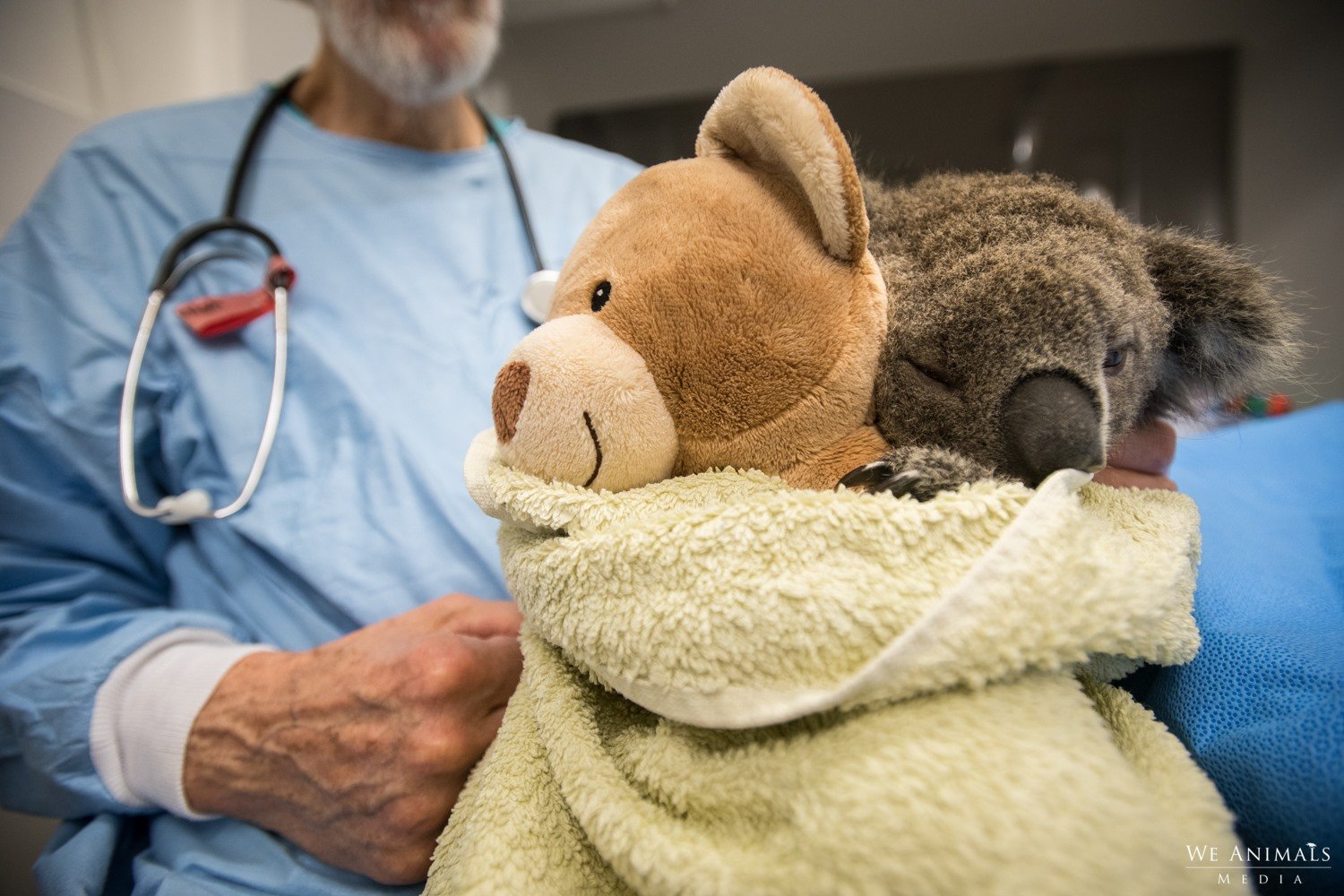
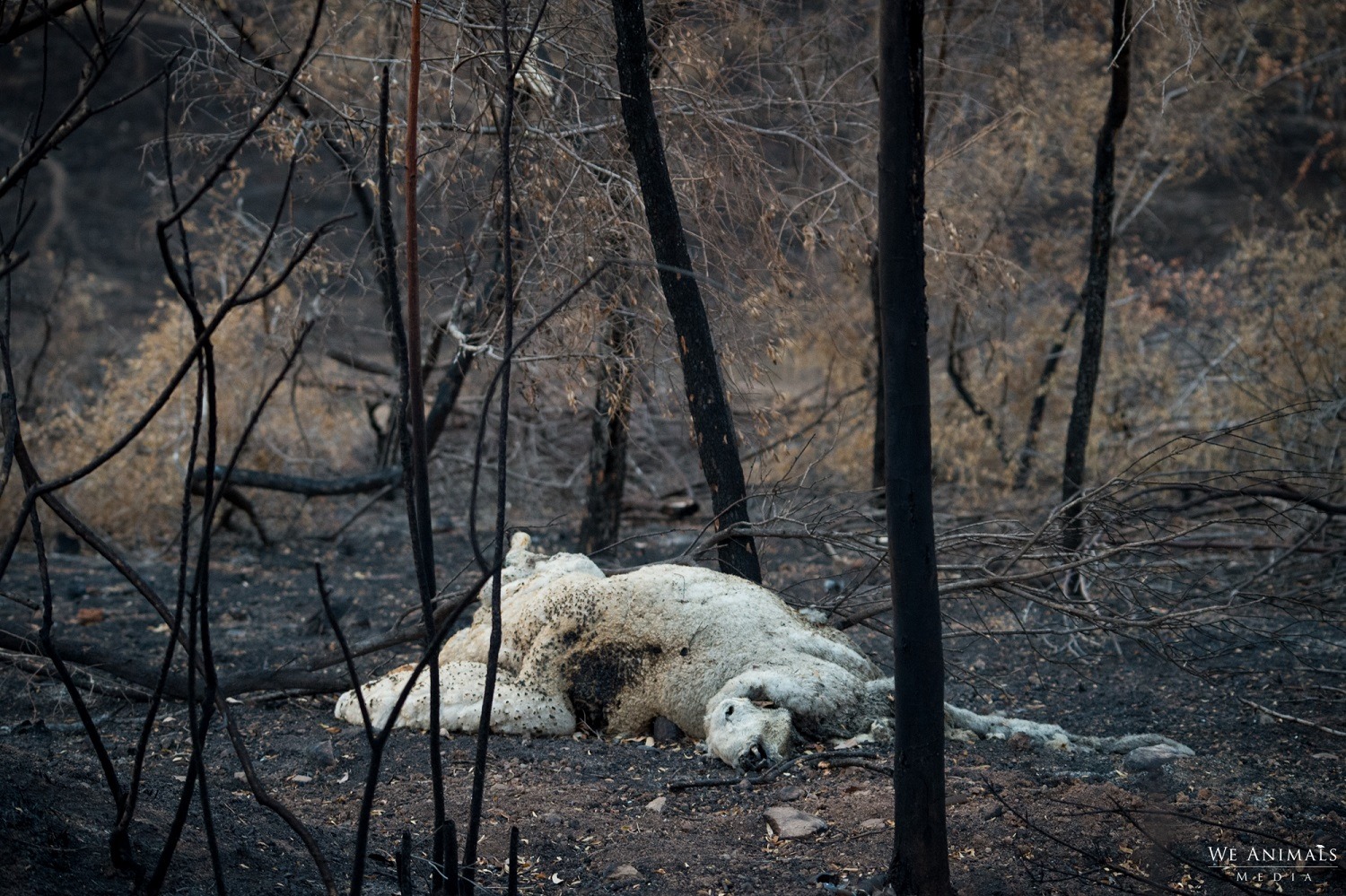
Living Beings, Not Livestock
Many would be surprised to learn that sheep wag their tails in happiness, or that they huddle together in a “mob”during fires, saving many in the middle from the fate that kills those on the outside. We are rarely given the chance to develop empathy for these animals or enjoy their charismatic personalities. If we did, we might realise how similar they are to us, and reject the speciesism that leads humans to think we can abuse them for our appetite, clothing and entertainment.
Disasters like these fires are a chance to revisit the notion of “business as usual” and ask ourselves how to prevent future catastrophes. As long as animals are farmed for their flesh and milk, they will be kept captive as “property” behind fences, prey for the next fire that burns and chokes them to death. Scientists predict that fires of this nature will become normal in a world that warms by 3 degrees Celsius. So, how do we avoid the worst of climate change?
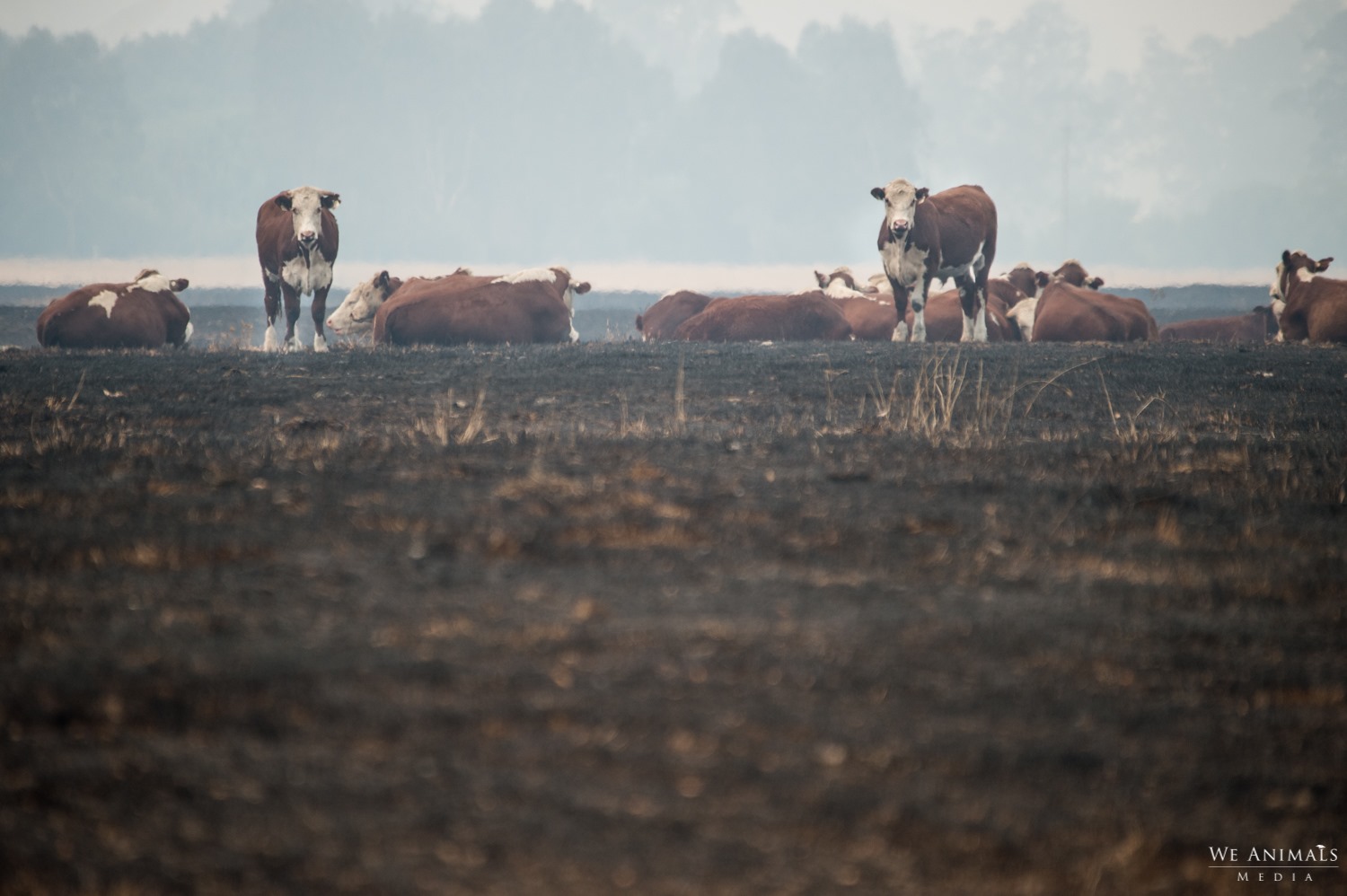
Fight Climate Change
The United Nations Intergovernmental Panel on Climate Change stated in 2019 that it will be impossible to keep global temperatures at a safe level unless we transform the way we produce food and use land. Researchers from the University of Michigan and Tulane University concluded in 2018 that animal-derived foods are responsible for 83.5 percent of diet-related greenhouse-gas emissions, while vegetables, fruits, cereals, grains, nuts and seeds were each responsible for under 3 percent of diet-related emissions.
By removing meat, milk, eggs and other animal-derived “products” from our diets, we will be preventing worsening climate change, while also showing that all animals deserve kindness, not just wildlife.
If not you, who? If not now, when?
Olivia Charlton is PETA’s Senior Activist Liaison. She lives in Melbourne with her husband and rescued animals, including her dog Mae, Mister Little, the cat, and bunnies, Bee and Benny. She also spends her weekends helping out at an animal sanctuary that rehabilitates wildlife and farmed animals.
Help Animals in 2025: Renew Your PETA Membership!
